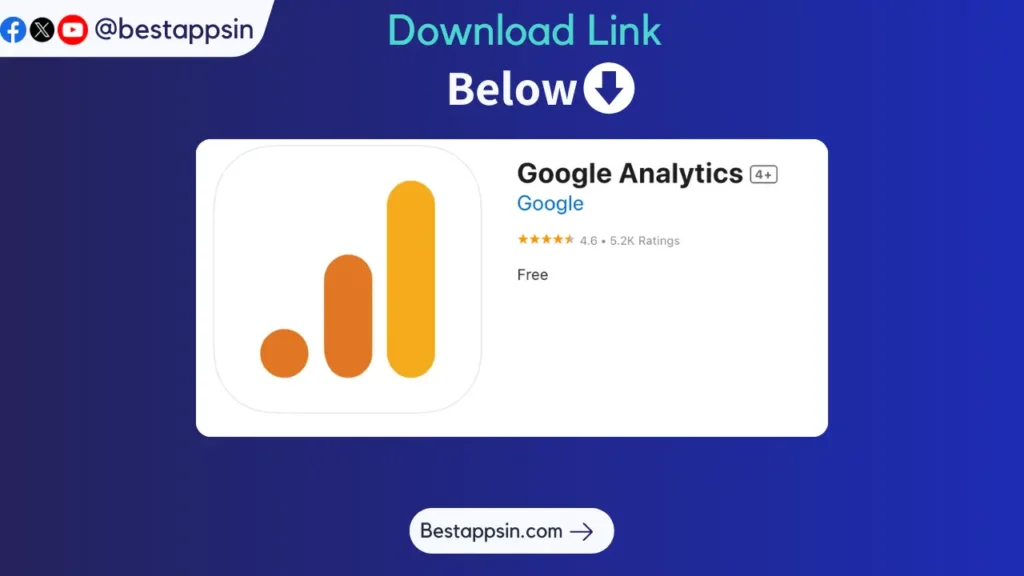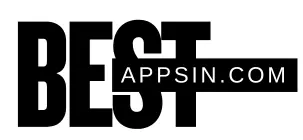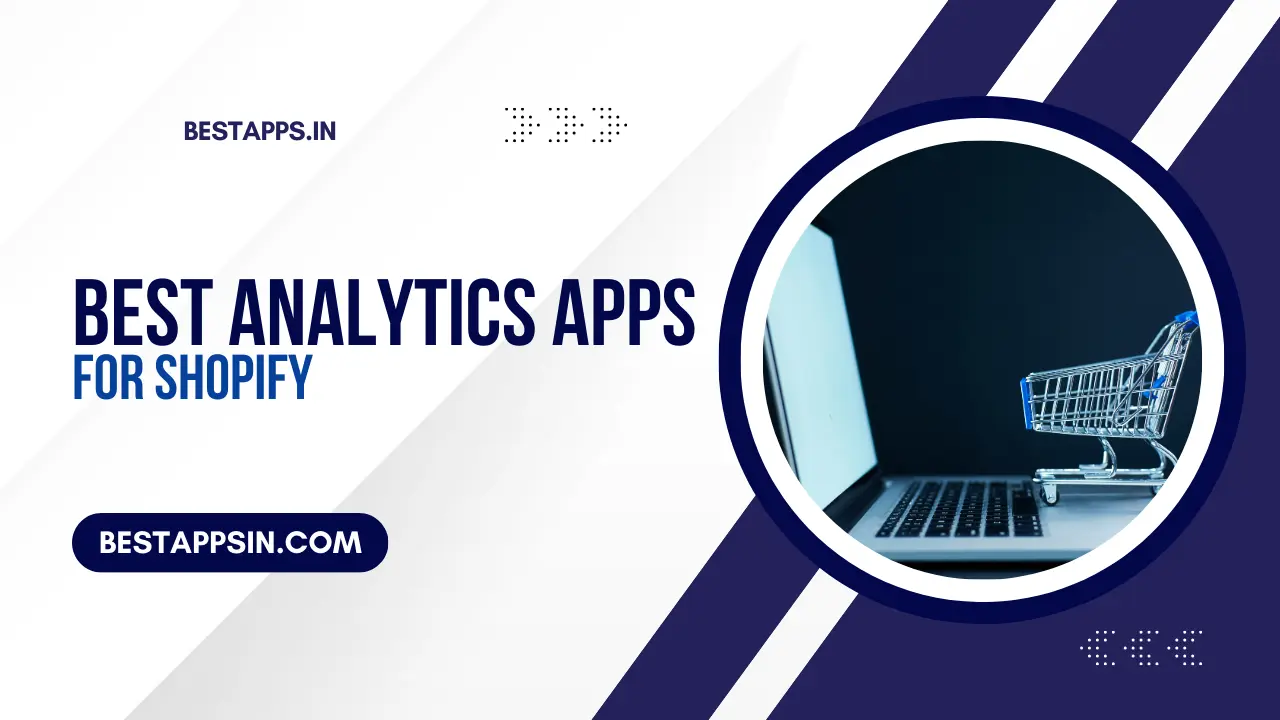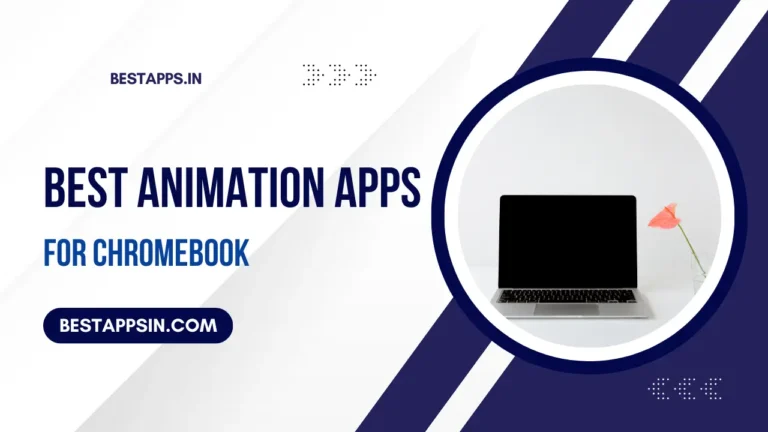Running a successful Shopify store requires more than just great products; it demands in-depth insights into your store’s performance. From tracking sales metrics to understanding customer behavior, analytics apps can give you the clear-eyed visibility needed to make informed decisions. In this in-depth guide to Shopify Store Performance Tracking, we’ll explore how to choose the right analytics solutions, compare top Shopify analytics tools, and highlight key features that can take your store to the next level.
Table of Contents
Why Best Analytics Apps for Shopify Matter
Shopify store owners face numerous daily challenges: managing inventory, responding to customer inquiries, marketing products, and ensuring profitability. While the Shopify platform offers basic analytics, scaling your store often requires advanced reporting for Shopify that goes beyond standard metrics.
- Visibility into Key Performance Indicators (KPIs): Detailed analytics can help you track revenue, conversion rates, and customer retention, ensuring you understand how your store is really performing.
- Time Savings and Efficiency: Manual data crunching wastes valuable hours. An automated Shopify dashboard tool consolidates your metrics in one place, saving you time so you can focus on growing your business.
- Better Decision-Making: Whether you’re optimizing a marketing campaign or assessing product demand, data visualization for Shopify can reveal patterns and trends you might otherwise miss.
- Enhanced Marketing Analytics for Shopify: Target your advertising efforts more effectively by understanding which channels bring the highest-value customers.
By leveraging the best analytics apps for Shopify, you don’t just track numbers—you gain powerful insights into what makes your store profitable, which areas need improvement, and how to plan for future growth.
Also Read: Best Apps for Self-Employed Hairdressers
Comprehensive List of 8 Top Shopify Analytics Tools
Below is a curated list of eight Shopify Analytics Apps that can meet a range of needs, from sales metrics tracking for Shopify to real-time analytics and customer segmentation.
1. Google Analytics (Native Shopify Integration)

Arguably the most popular analytics platform, Google Analytics remains a top choice for eCommerce businesses. With a simple integration into Shopify, it provides robust data on customer demographics, site usage, and user paths. You can also enable Enhanced eCommerce tracking for deeper insights into product performance and checkout behavior.
- Features & Benefits
- Enhanced eCommerce Tracking: Monitor product impressions, add-to-cart actions, and conversions in granular detail.
- Traffic and Customer Behavior Analysis: Understand which marketing channels bring the highest-quality visitors.
- Real-Time Analytics on Shopify: See who’s on your site at any moment and track live events such as purchases.
- Practical Use Cases
- Pinpoint which products resonate most with your audience.
- Track store-wide or campaign-specific revenue.
- Combine analytics data with Google Ads for refined advertising strategies.
- Pricing Details
- Free for the standard version, suitable for most small-to-mid-sized Shopify stores.
- Google Analytics 360 is a premium tier with advanced features, priced for enterprise-level businesses.
- Pros and Cons
| Pros | Cons |
|---|---|
| Industry-leading analytics and reporting capabilities. | Advanced configurations can be complex for beginners. |
| Seamless integration with other Google tools (Ads, etc.). | Requires manual setup to leverage advanced features. |
| Trusted, widely used solution with extensive documentation. | The free version sampling can limit real-time data accuracy. |
- Public Ratings & Reviews
- Highly rated by digital marketers worldwide. Often praised for its comprehensive toolkit, though some note the steep learning curve.
- CTA
2. Shopify Analytics (Native)
Before jumping to third-party tools, it’s worth considering Shopify’s own analytics solution. It offers a built-in dashboard covering essential metrics like sales, returning customer rate, and Shopify conversion analytics.
- Features & Benefits
- Built-In Convenience: No need for external setup; it’s ready to go out of the box.
- Sales Metrics Tracking for Shopify: View daily sales, top products, and order volume at a glance.
- Basic Marketing Insights: Track your best-performing marketing channels.
- Practical Use Cases
- Quickly review sales trends over time to forecast inventory needs.
- Identify top-selling products and track seasonal fluctuations.
- Monitor discount code usage and conversion rates from internal marketing efforts.
- Pricing Details
- Available across all Shopify plans, though advanced reporting features become more robust on higher-tier Shopify plans (e.g., Shopify, Advanced Shopify, and Shopify Plus).
- Pros and Cons
| Pros | Cons |
|---|---|
| Included with your Shopify subscription. | Less comprehensive than dedicated analytics apps. |
| User-friendly, especially for beginners. | Advanced reports locked behind higher-tier plans. |
| Seamless integration with other Shopify features. | Limited customization of dashboards and reports. |
- Public Ratings & Reviews
- Generally praised by new Shopify merchants for its simplicity, but larger stores often require more granular detail.
- CTA
3. Conversific
Conversific is an intuitive app that merges basic analytics with actionable insights, helping merchants improve store performance without drowning in data. It offers Shopify dashboard tools that focus on user experience, advanced reporting, and competitor benchmarking.
- Features & Benefits
- Easy-to-Read Dashboards: Visualizes metrics like revenue, traffic, and conversion rate in a single view.
- Competitive Benchmarks: Compare your store’s performance against industry averages.
- Product & Customer Segmentation: Identify top customers and best-selling products to allocate resources effectively.
- Practical Use Cases
- Quickly spot underperforming products and strategize for improvement.
- Benchmark your store against similar niche competitors.
- Monitor marketing campaigns to see which efforts bring the best ROI.
- Pricing Details
- Free Plan with limited features for new merchants.
- Premium Plans starting around $29/month for additional reports, competitor data, and advanced features.
- Pros and Cons
| Pros | Cons |
|---|---|
| Easy setup and user-friendly interface. | Limited customizability for advanced data analysis. |
| Competitor benchmarking provides valuable context. | Some might outgrow it once they require deeper insights. |
| Free plan offers a solid test run of the app. |
- Public Ratings & Reviews
- Typically rated 4.5+ stars on the Shopify App Store, with users praising its simplicity and insightful benchmarking tools.
- CTA
4. Metrilo
Metrilo positions itself as a powerful marketing analytics for Shopify tool, combining email marketing automation with deep customer data. The platform emphasizes customer retention by tracking user behavior from first click to repeat purchases.
- Features & Benefits
- Comprehensive Customer Journey Analysis: See how customers interact with your store, from first visit to repeat sale.
- Email Automation: Trigger personalized emails based on browsing behavior and purchase history.
- Real-Time Analytics: Spot sales spikes or dips as they happen.
- Practical Use Cases
- Create personalized email campaigns for high-value repeat buyers.
- Pinpoint where customers drop off in the funnel and optimize that stage.
- Use advanced segmentations to tailor product recommendations.
- Pricing Details
- Plans start at $119/month, offering analytics, email marketing, and CRM features.
- Higher tiers include deeper segmentation capabilities and advanced reporting.
- Pros and Cons
| Pros | Cons |
|---|---|
| Combines analytics, CRM, and email marketing in one. | Steep monthly fee compared to some competitors. |
| Highly detailed customer journey tracking. | Could be overkill for very small stores. |
| Ideal for data-driven lifecycle marketing. | Learning curve for advanced features. |
- Public Ratings & Reviews
- Often praised for its integrated approach to analytics and marketing, though some users find the cost high if they only need basic reporting.
- CTA
5. Lifetimely
For those seeking Shopify KPI measurement focused on profitability, Lifetimely zeroes in on lifetime value (LTV) analytics and cohort analysis. It helps you understand the true value of customers over time and how your marketing efforts affect retention.
- Features & Benefits
- Lifetime Value Calculations: Track average LTV by acquisition channel, letting you see which marketing tactics offer the best returns.
- Cohort Analysis: Group customers by signup date or purchase activity to spot churn patterns.
- Cost of Goods Sold (COGS) Tracking: Integrates your product costs to show real profitability.
- Practical Use Cases
- Allocate marketing budget to channels delivering high-value, repeat customers.
- Identify churn rates and develop strategies to reduce them.
- Set realistic revenue projections based on historical data.
- Pricing Details
- Plans begin at $19/month for basic LTV reporting.
- Higher tiers unlock deeper cohort analysis and custom reporting.
- Pros and Cons
| Pros | Cons |
|---|---|
| Focuses on profitability, not just revenue. | Limited general analytics outside of LTV and profitability. |
| Helpful for stores aiming to understand long-term value. | Some manual data input needed for accurate COGS tracking. |
| Clean interface tailored for eCommerce insights. | May require additional tools for broader metrics coverage. |
- Public Ratings & Reviews
- Consistently rated around 4.9+ stars, praised for clarity in showing true profit and ROI.
- CTA
6. Better Reports
If you’re seeking advanced reporting for Shopify, Better Reports offers customizable dashboards that dive into product-level and customer-level metrics. It also integrates with popular apps like ReCharge, Reward Points, and others, making it a flexible solution for stores with specialized workflows.
- Features & Benefits
- Over 60 Pre-Built Reports: Covers everything from sales tax to inventory aging.
- Custom Report Builder: Tailor your reports to match unique KPIs.
- Scheduled Reporting: Automate sending daily, weekly, or monthly reports to your inbox.
- Practical Use Cases
- Get detailed product performance by SKU or variant.
- Assess which geographic regions yield the highest conversion rates.
- Export data to CSV for offline analysis or integration with third-party tools.
- Pricing Details
- Plans start around $19.90/month, scaling based on the number of orders and advanced features.
- Pros and Cons
| Pros | Cons |
|---|---|
| Extremely flexible and customizable. | Interface can feel overwhelming for new users. |
| Automatically delivered reports save time. | More expensive as order volume grows. |
| Compatible with multiple third-party apps. | Requires a learning period to master all features. |
- Public Ratings & Reviews
- Typically 4.9+ stars on the Shopify App Store, commended for its responsive support and robust reporting suite.
- CTA
7. Daasity
Daasity serves as a data analytics platform designed for eCommerce merchants who require a more holistic approach. From data warehousing to advanced Shopify store analytics, Daasity helps unify data across multiple channels (Shopify, Amazon, Google Ads, etc.) into one centralized source of truth.
- Features & Benefits
- Multi-Channel Data Aggregation: Centralize data from Shopify, Amazon, Google Ads, Facebook, and more.
- Custom Dashboards & Visualization: Build data visualization for Shopify that tracks performance across all channels.
- ETL Pipelines: Extract, transform, and load data seamlessly for deeper analysis in tools like Looker or Tableau.
- Practical Use Cases
- Analyze cross-channel marketing ROI in a single view.
- Pull historical data for long-term trend analysis.
- Combine Amazon FBA metrics with Shopify store results.
- Pricing Details
- Custom Pricing typically geared toward mid- to large-scale eCommerce stores.
- Pros and Cons
| Pros | Cons |
|---|---|
| Consolidates multiple data sources into one platform. | Higher complexity and cost, ideal for larger businesses. |
| Customizable dashboards for in-depth analytics. | May be overkill for smaller stores with straightforward needs. |
| Professional support and onboarding available. | Lengthy setup if you need extensive data integrations. |
- Public Ratings & Reviews
- Gaining traction among larger Shopify Plus merchants for its robust data handling.
- CTA
8. Peel Insights
Designed for sales funnel analysis and automated data insights, Peel Insights uses machine learning to generate daily reports on crucial store metrics. It simplifies large data sets into actionable steps for store owners, focusing on cohort retention and deeper Shopify conversion analytics.
- Features & Benefits
- Automated Daily Reports: Receive updates on sales, cohort performance, and subscription data without manual effort.
- Customer Segmentation: Filter customers by discount usage, average order value, or campaign activity.
- Growth Recommendations: Get suggestions based on observed trends in your store’s data.
- Practical Use Cases
- Quickly identify the success of a new product launch over time.
- Run experiments on discount codes and see which segments respond best.
- Track monthly recurring revenue for subscription-based businesses.
- Pricing Details
- Starts at $49/month, scaling with store size and feature needs.
- Pros and Cons
| Pros | Cons |
|---|---|
| Automated insights save time and guide data interpretation. | Less customization compared to fully manual analytics tools. |
| Great for cohort analysis and retention metrics. | Pricier for smaller stores just starting out. |
| Actionable growth recommendations built-in. | Advanced personalization might require other tools. |
- Public Ratings & Reviews
- Generally praised for its user-friendly daily updates and automated insights, especially for subscription-based merchants.
- CTA
Comparison Table of Key Features and Pricing
Below is a brief comparison table to help you “How to Choose the Best Analytics App for Your Shopify Store” based on essential considerations—features, cost, and unique selling points.
| App | Key Feature | Pricing | Ideal For |
|---|---|---|---|
| Google Analytics | Enhanced eCommerce Tracking | Free (standard), Paid (360) | All store sizes, especially those using Google Ads |
| Shopify Analytics | Built-in convenience | Included with plan | Beginners and those on basic Shopify plans |
| Conversific | Competitive Benchmarking | Free/Paid Plans | Stores wanting quick insights + competitor data |
| Metrilo | Integrated Email + CRM | From $119/month | Data-driven stores focusing on retention |
| Lifetimely | LTV & Cohort Analysis | From $19/month | Stores prioritizing profitability insights |
| Better Reports | Highly Customizable Reports | From $19.90/month | Stores needing in-depth, custom reporting |
| Daasity | Multi-Channel Aggregation | Custom Pricing | Medium-to-large stores with multi-channel data |
| Peel Insights | Automated Daily Insights | From $49/month | Merchants wanting quick, AI-driven analytics |
How to Choose the Right App
1. Assess Your Budget
- Some merchants only need best free vs. paid Shopify analytics apps compared. Start with free or lower-priced plans, and scale to more advanced solutions as your business grows.
2. Evaluate Data Complexity
- If you’re running a large operation with multiple sales channels, you may need a Shopify analytics app that integrates with external platforms like Amazon or social media ads. Smaller, single-channel businesses often do fine with simpler tools.
3. Consider Team Size
- A solo entrepreneur might favor user-friendly, automated tools, whereas larger teams often require advanced features like custom reporting, multi-user access, and scheduled reports.
4. Look for Must-Have Reporting Features
- Focus on apps that offer sales funnel analysis, real-time dashboards, and robust segmentation capabilities. These “must-have reporting features for Shopify analytics tools” ensure your store’s data is always actionable.
5. Check Integration Options
- Confirm compatibility with your marketing stack, such as email marketing platforms or other third-party services. For instance, many store owners want tips to integrate Google Analytics with Shopify seamlessly for multi-channel tracking.
6. Read User Reviews
- The best insights often come from other Shopify merchants. Look at user reviews to gauge support quality, reliability, and feature updates over time.
FAQs
- Do I really need a paid analytics app if Shopify has a built-in dashboard?
It depends on your store’s needs. Shopify’s native analytics can be enough for new or small merchants. However, if you require in-depth segmentation, advanced reporting, or multi-channel tracking, upgrading to a top Shopify analytics tool can provide more comprehensive insights. - Is my store’s data secure when using third-party apps?
Most reputable apps adhere to strict data protection standards (GDPR, etc.). Always review each app’s privacy policy and check user reviews for any red flags regarding data privacy. - How steep is the learning curve for advanced reporting?
It varies. Some apps like Conversific prioritize simplicity, while others like Better Reports offer a vast array of custom features that can be overwhelming at first. Look for tutorials, webinars, or responsive support teams to ease the transition. - Can I integrate Google Analytics with Shopify without coding skills?
Generally, yes. In most cases, you just have to copy your Google Analytics tracking ID into Shopify’s preferences. For enhanced eCommerce tracking, a bit of extra setup is required, but Shopify guides make it manageable, even for beginners. - What metrics should I focus on first if I’m new to analytics?
Start with basic KPIs: revenue, conversion rate, average order value (AOV), and customer acquisition cost (CAC). As you grow more comfortable, you can delve into lifetime value, cohort analysis, and advanced funnel metrics.
Future Trends for Analytics Apps for Shopify
The eCommerce landscape is continually evolving. Here’s a glimpse of future developments that may reshape ecommerce analytics for Shopify:
- AI-Powered Insights: Apps will increasingly use machine learning to deliver predictive analytics, forecasting sales trends and suggesting marketing optimizations.
- Augmented Reality (AR) for Customer Experience: While AR is often associated with product visualization, it can generate new behavioral data that advanced analytics apps can track and interpret.
- Deeper Omnichannel Integrations: Expect more robust connections with offline point-of-sale (POS) systems, social media marketplaces, and B2B platforms.
- No-Code Customizations: Future analytics tools may provide drag-and-drop interfaces, enabling merchants to build custom dashboards with minimal technical expertise.
Key Takeaways
- Choose the Right Depth: Start with a solution that offers the metrics you truly need. Complexity doesn’t always equal effectiveness.
- Budget Wisely: Free and paid solutions each have merits. Evaluate your growth stage and choose accordingly.
- Prioritize Integration: Ensure compatibility with other systems like email marketing platforms, POS, or external marketplaces.
- Monitor Cohorts and LTV: Repeat purchases and long-term customer value often determine real profitability, so pick tools that excel in these areas.
- Stay Future-Ready: Emerging trends like AI-driven analytics and AR will likely shape the next generation of Shopify store performance insights.
Conclusion
In today’s data-driven eCommerce environment, the best analytics apps for Shopify are more than just dashboards—they are decision-making engines. By pinpointing exactly where your store thrives and where it needs improvement, these tools empower you to optimize marketing campaigns, improve product offerings, and ultimately boost your bottom line. Whether you’re a small store owner or managing multiple sales channels, adopting the right analytics solution will save time, provide clarity, and set a solid foundation for comprehensive metrics for maximizing Shopify sales.
Ready to elevate your store’s performance? Explore the tools listed above, test out the free trials where available, and use the insights from “How to Choose the Best Analytics App for Your Shopify Store” as a roadmap. The right analytics app can be your competitive edge in a crowded online marketplace.










1 Comment